Timeline
1930
The Luker’s Brewery building, High Street, is demolished.
Ekco Ltd set up their new factory in Southend.
Essex
Yacht
Club
change
boat.
The
Gypsy
had
served
the
club
for
a
number
of
years,
but
time
took
its
toll
of
the
floating
headquarters
so
much
so,
this
year
the
club
moved
into
a
former
Tilbury
ferry
boat
called
'Carlotta',
which
was
also
renamed
'Gypsy'.
However,
with
the
outbreak
of
the
Second
World
War,
the
Essex
Yacht
Club's
HQ
was
soon
requisitioned
by
the
Government,
being
sunk
near
Tower
Pier,
London,
by
enemy
action.
This
left
Essex
homeless
until
for
a
short
period
they
took
over
the
Old
Leigh
Station
buildings
previous
to
the
purchase
in
1947
of
'Lady
Savile'
a
Dover
harbour tender of substantial proportions.
Dramatic
Lifeboat
rescue.
November
brought
about
a
regular
rescue
for
the
lifeboat
team
at
Southend
pier.
The
Thames
Barges
were
suffering
angry
waters
causing
them
to
drag
there
anchors,
and
the
crews
of
no
less
than
4
barges
needed
assistance.
Burning
blankets
achieved
the
result
of
raising
the
alarm,
and
it
was
not
long
before
the
Greater
London
was
plucking
the
crews
from
their
stricken vessels the Marion, Emily, Charles and Esther.
New
Church
for
Leigh.
St
Margaret's
Church
is
situated
on
Lime
Avenue
in
Leigh
and
was
built
in
1930
and
is
one
of
Southend's
more
recent
churches.
The
first
priest-in-charge
was
Father
Francis
Hilditch.
The
foundation
stone
for
the
church
building
was
laid
on
26th
July
1930
by
Henry
Wilson,
the
Bishop
of
Chelmsford,
and
most
of
the
church
was
built
within
40
weeks
at
the
cost
of
£8,500.
The
north
aisle
and
Blessed
Sacrament
(Ascension)
chapel
was
added
later
in
1938.
The
mission
church became the church hall and survived for a further 34 years.
The
Great
Rameses
dies.
This
amazing
magician,
although
born
in
Russian
Poland
had
a
soft
spot
for
Southend.
He
had
toured
most
of
the
countries
music
halls
under
his
title
of
the
Great
Rameses
but
was
really
called
Albert
Marchinsky.
In
1917
he
decided
to
plough
his
fortune
into
the
Empire
Theatre
in
Alexandra
Street,
but
this
brave
venture
failed
and
he
went
back
out
on
the
road.
In
1930
he
was
back
in
the
town, in July he needed an urgent operation and died in the Victoria Hospital in Warrior Square aged 54.
Kent
Elms
Corner.
An
area
of
Eastwood
that
meets
up
with
the
A127,
housing
in
this
area
started
to
be
developed this year. This land area includes the Devonshire Gardens estate.
Dixons
begins.
Charles
Kalms
opens
the
first
Dixons
photographic
studio
at
32
High
Street,
Southend.
Not
to
be
mistaken
for
J.
L.
Dixons
at
the
top
of
the
High
Street.
This
Dixons
became
the
national
brand
later
absorbed into Currys.
Southchurch
Hall.
This
magnificent
Tudor
hall
now
in
the
hands
of
the
Local
Authority,
received
a
much
needed
makeover
in
1930.
Some
original
doorways
and
windows
were
uncovered
during
the
restorations.
The
Hall
was
used
as
a
public
library
until
1973
and
now houses a local museum that attracts around 18000 visitors annually.
A
Queen
is
crowned.
This
year
noted
The
Hippodrome,
in
Southchurch
Road;
which
at
this
time
was
the
live
entertainment
venue
of
the
town.
Seeing
the
likes
of
Gracie
Fields,
Houdini,
Flanagan
and
Allen
and
Little
Titch,
would
witness
amazing
crowds
turning
up
for
the
crowning
of
this
year's
Carnival
Queen,
so
packed
people
were
standing
at
the
back
of
the auditorium and sitting in the aisles on 15th August 1930.
Live
Cricket
at
the
pier.
At
a
time
when
TV
was
in
its
infancy
and
radio's
were
too
heavy
to
lug
around,
there
was
always
away
to
keep
up
with
the
latest
sport.
Thanks
to
Johnnie
Walker
whisky
who
sponsored
a
number
live
scoreboards
one
being
at
the
pier
entrance
cricket
fans
could
watch
the
action
on
the
board
as
it
happened.
This
amazing
bit
of
machinery
worked
in
conjunction
with
a
team
of
commentators
live
at
the
ground
along
with telephony linking the board operators.
1931
Canvey Island ceases to be a true island. The first ever bridge to the main land was opened.
Southend fire department takes delivery of there first new Miles fire engine.
Seafront
boating
lake
opens.
A
remarkable
landmark
that
would
prove
to
be
a
signature
for
Southend
seafront
opened
in
1931.
This
boating lake would become a scene on many a Southend postcard.
Southend
road
patrol
formed.
Southend
Police
due
to
necessity
of
the
expansion
of
the
road
network
and
the
increasing
number
of
visitors
coming
into
the
town
by
car,
set
up
on
18th
March
1931
a
separate
road
patrol.
The
force's
fleet
was
made
up
then
of
4
cars,
a
single
motorbike and 3 motorbike combinations.
Westcliff High School for Girls opens.
Southchurch
Hall
and
Gardens.
A
significant
piece
of
history
received
great
attention.
The
first
Mayor
of
Southend
Thomas
Dowsett
J.P.
on
behalf
of
his
family
donated
Southchurch
Hall
and
gardens
for
the
enjoyment
of
the
people
of
Southend.
On
2nd
June
1931,
Dowsett's
son
also
called
Thomas,
formally
opened
the
hall
after
restoration
as
a
library
for
the
town.
The
grounds
were opened separately by the then Mayor Alderman Albert Martin.
July. International bowling matches at Southend.
Southend
Stadium
opens
for
dogs.
Located
off
Sutton
Road
this
shiny
new
stadium
welcomed
a
new
sport
to
the
town.
The
first
greyhound
meeting
ran
in
September
1931.
This
ground
became
famous
for
the
running
of
the
Thames
Silver
Salver.
The
last
ever
meeting was on Boxing Day 1985. The site now belongs to Mecca Bingo and Matalan to name just two.
Lifstan
Way
constructed.
A
direct
road
from
the
White
Horse
to
the
Easter
Esplanade
was
being
built
this
year,
to
be
called
Lifstan
Way,
perpetuating
the
memory
of
the
gift
of
the
Manor
of
Southchurch,
by
Lifstan
the
monk,
to
Christ
Church,
Canterbury
well
over
a
thousand
years
ago.
The
original
measurements
of
this
road
was
1,440
yards
long
and
60
ft
wide
between
fences,
with
a
36
ft
carriageway.
There
were
two
6
ft,
gravel
paths
and
two
6
ft
grass
ways.
The
carriageway
will
be
finished
in
clinker,
hard
core
and
tarred macadam. Work started on 1st October.
Saxon
arch
found.
As
if
Prittlewell's
St
Mary's
Church
did
not
have
enough
history.
1931
saw
another
discovery
in
the
shape
of
a
Saxon Arch discovered in the north wall. Confirming that on this site was one of the first Christian churches in the country.
Station
for
Southchurch.
A
new
rail
station
arrived
in
1931.
Southend
East,
so
called
to
try
and
spread
the
visitors
to
the
town
along
the seafront.
Kiwi's
play
cricket.
Essex
County
Cricket
played
host
at
Southchurch
Park
to
the
New
Zealanders
in
August
1931.
Essex
to
their
credit drew the match.
Countess
elected.
This
would
the
last
time
the
Countess
of
Iveagh
would
stand
for
election;
on
27th
October
a
straight
battle
ensued
between
the
Tory
Countess
and
her
Labour
opposition
with
a
significant
vote
in
favour
of
the
Countess,
the
results:
Countess
of
Iveagh (Conservative) 46,564, Mr A. E. Bechervaise (Labour) 7,741. Providing a Conservative majority of 38,823.
1932
Southend Corporation bought Porters from Sir Charles Nicholson.
Rossi's
Ice
cream.
Pietro
and
Luisa
Rossi
moved
to
Southend
from
Consett
to
go
into
partnership
with
Massimiliano
and
Anna
Rossi
who
had
already
established
Rossi's
Ice-cream
at
1
Marine
Parade, 37 High Street and Western Esplanade.
New
Station
for
the
town.
Southend
East
came
alive
for
passenger
traffic
in
1932.
The
area
had
always
been
in
existence
and
had
been
known
as
Southend
Sidings
for
carriages
and
goods.
The
need
of
the
town
however
was
to
tempt
the
day
visitors
to
disembark
further
along
the
line
and
to
take
the
pressure
off
Southend
Central,
and
spread
the
beach
along
the
coast.
The
sidings
gave
way
to development leaving the Southend East Station to remain in solitude.
J.
H.
Jacks
Ltd.
A
new
clothing
factory
was
established
this
year
in
Southchurch,
at
one
time
employing
250
workers.
The
company
specialised
in
producing
shirts
and
pyjama's.
Turning
to
the
war effort to produce RAF and demob clothing and of clothing for Russian children.
The
Gas
light
&
Coke
Company
purchased
the
Southend
Company,
taking
over
the
main
works
on
Eastern Esplanade.
New
Hospital.
Southend
General
Hospital
replaced
the
Victoria
Hospital
in
Warrior
Square
on
26th
July
1932.
Built
in
a
green
area
to the west of the town along Prittlewell Chase; the hospital would be able to deal with up to 221 patients.
Tram
ticket
office
goes.
Since
1910
the
tram
ticket
office
in
Victoria
Circus,
positioned
outside
the
Technical
College,
provided
an
invaluable service to the travelling public of Southend, in 1932 the office was demolished.
Tomassi's
Restaurant
opens
in
the
High
Street.
A
restaurant
that
is
still
very
much
alive
today
and
very
popular
by
young
and
old
alike, probably due to its fantastic Ice Cream menu which tops off an excellent meal.
Johnson
&
Jago.
A
Leigh
ship
builders
founded
this
year,
and
would
become
integral
to
the
war
effort
by
providing
a
turn
a
round
service
for
the
many
marine
and
military
craft
used
during
operations.
During
1940-44
the
company
turned
around
£2
million
worth
of
ships
in
repairs.
They
also
launched
35
112ft
naval
M.L.s
(used
in
Commando
raids,
as
mine-layers,
hospital
carriers,
anti-
submarine craft), also 15 motor fishing craft and 18 harbour service craft. The firm at the time employed around 200 employees.
1933
The land of Southend Airport is bought by the Corporation, the 157 acre site cost £20,000.
The
Borough
expands.
Eastwoodbury,
Eastwood
and
Shoebury
were
incorporated
into
the
Borough.
Raising
the
population
to
around 130,000.
First
baby
born.
The
new
General
Hospital
was
settling
in
providing
a
quality
medical
service
to
the
town's
population,
it
was
nicely
recorded
on
2nd
February
the
hospital
welcomed
its
very first baby born.
Cricket
at
Chalkwell.
The
Essex
1st
XI
used
Chalkwell
Park
for
first
time
in
1933.
This
continued
through
until
the
70’s,
with
a
sea-saw
of
fixtures
between
Southchurch
Park
ensuing.
Essex
played
their
last
match
on
the
ground
in
1976,
although
it
is
still
used
by
Westcliff-on-Sea CC.
Greyhounds
arrive.
In
May
the
Southend
Stadium
opened
on
the
site
of
the
old
brickworks
in
Grainger
Road.
Built
by
a
private
company
Southend
Stadium
Ltd
for
the
purpose
of
racing
Greyhounds,
but
later
home
to
Southend
United.
A
Speedway
track
arrived
in
1948.
It
could
accommodate
25,000
people,
with
some
8,000
under
stadium
cover.
The
greyhound
track
was
500
yds
in
length.
The
site
today
is
mainly
a
shopping
centre
with
Matalan and Mecca Bingo taking over.
New
map.
Southend
Borough
Council
developed
a
ward
map
in
1933,
showing
11
wards,
including
Pier
Ward
and
Saint
Clement's
Ward, both no longer exist.
Joining
the
line.
1933
was
a
significant
year
for
the
ward
of
Chalkwell.
Located
between
Leigh
and
Westcliff,
an
affluent
area
which
is
graced
with
a
significant
park
and
now
its
very
own
rail
station.
Located
on
the
'London
Tilbury
and
Southend'
Line,
the
station
became
an
essential
stop
off
for
later
cricket
matches
in
the
park,
and
commuters
moving
into
the
many
houses
close
by.
The
station
formally
opened
on
11th
September
1933,
a
short
trip,
but
mainly
coastal
route,
from
Leigh,
and
at
the
point
as
the
line
turned
in
land
and
started
the
incline
to
Westcliff.
The
station
would
also
prove
handy
for
trippers
looking
for
a
more
sedate
beach
experience,
or
a
hearty jaunt along the prom towards the pier.
Band-standers
get
cover.
The
popularity
of
the
bandstand
as
a
feature
on
Southend's
cliff
top
led
to
a
need
to
provide
more
and
more
facilities
to
the
growing
audiences.
1933
saw
all-weather
accommodation
and
cover
for
the
thousands
of
music
lovers
on
8th
April
be
formally
opened
by
Mayor Tweedy-Smith.
Shorefields
purchased.
Even
by
1933
large
plots
in
the
town
were
still
in
private
ownership,
this
year
the
corporation
purchased
Shorefields
for
£14,500.
Subsequent
powers
to
purchase
intervening
housing
was
acquired
to
enable
the
extension
of
the
cliffs
and
the execution of much needed road improvements.
Boat
hits
pier
again.
'Pier
closed
for
repairs'...
but
all-right
for
Easter!
150-ton
barge
'Matilda
Upton'
crashes
into
Southend
Pier
at
height
of
great
gale."
Moored
off
Westcliff,
the
barge
dragged
it's
anchor
and
ploughed
into
the
pier,
two
crewmen
on
board
escaped
by
jumping
onto
the
pier
causeway
at
the
moment
of
impact.
They
went
back
aboard
to
rescue
the
cat
locked
in
the
bosun's
quarters.
The cost of the damage to the pier was estimated at £5,000.
October. Inclusion of Shoeburyness and Eastwood. Population 130,000, rateable value £1,381,269. Area 10,333 acres.
1934
Keddies reveal their new look shop front.
New
Rail
Station
for
Leigh.
4th
January
1934
saw
the
opening
of
the
new
Leigh-on-Sea
Station.
Replacing
the
one
in
Old
Leigh
High
Street
(pictured
above)
serving
the
LTS
line.
This
change
allowed
for
a
new
purpose
built
3
platforms,
and
for
the
road
north
of
the
original
station
to
widen
with
demolishing
of
the
buildings
north
of
the
line.
The
District
Line
on
the
underground
once
proclaimed
a non stop service from the centre of London to the Southend area, and Leigh (new station) was the first to be called after Barking.
St. John’s Ambulance Southend take delivery of their brand new 22 horsepower Commer vehicles.
The
Hippodrome
changes.
The
live
entertainment
venue
of
the
town
changed
not
only
it's
name
to
the
Gaumont
but
also
made
many
physical
changes
to
this
huge
theatre.
With
new
paving
laid,
a
brand
new
canopy,
and
the
façade
was
awash
with
neon
lighting,
not
forgetting
the
major
changes
in
the
auditorium
and
lighting.
The
grand
opening
on
18th
January 1934 saw the films 'Meet My Sister' and 'A Cuckoo in the Nest' on show.
Southend
United
move
grounds.
After
15
years
based
at
the
Kursaal
ground,
Southend
United
decided
to
break
contract
and
move
to
the
newly
opened
Southend
Stadium,
originally
intended
for
the
racing
of
Greyhounds.
The
site
now
is
a
shopping
area
with
the
likes of Lidl and Matalan as well as the Mecca Bingo Centre taking over the footprint.
Bon
Marche
sells
up.
This
large
ladies
boutique
and
general
goods
sold
up
shop
in
Alexandra
Street,
to
be
purchased
by
the
Southend
Police
to
add
to
it's
growing
building
stock
in
the
street.
The
main
purpose
to
purchase
was
to
address
the
lack
of
mortuary
facilities
within
the
town.
In
1934
the
new
town's
mortuary
quite
modern
for
the
day
situated
to
the
rear
of
the
building
opened
for
business.
The
young
officers
in
the
police
station
next
door
were
saddened,
however,
to
see
the
end
of
the
Bon
Marche
as
the
upstairs
quarters
were
occupied
by
the
young
female
sales
assistants,
a
source
for
a
number
of
romances.
The
mortuary
served
the
town
until
1961,
when
the
role was undertaken by Southend General Hospital.
Southend
Airshow.
Could
this
be
the
first
Southend
Airshow?
As
part
of
the
1934
Southend
Hospital
Carnival
period this aerial spectacular took place.
1935
Southend Corporation opened Porters as a Civic Reception House and Mayor's Parlour.
The Council purchased Leigh cliffs and the foreshore from the Salvation Army for £33,500.
February.
J.
H.
Burrows
dies
aged
80,
Councillor,
Mayor
and
Publisher,
(J.
H.
Burrows
and
Sons publishers of the Southend Standard and others).
Putting
on
the
Ritz.
Church
Road
saw
the
opening
of
the
Ritz
Cinema
on
14th
Feb
1935;
sitting
proud
next
to
the
Palace
Hotel
on
Pier
Hill.
the
premier
programme
was
really
special
with
the
Mayor
in
attendance
to
formally
open
the
cinema
and
the
star
Anna
Neagle,
of
the
first
film
'Nell
Gwyn'
also
on
hand
to
provide
the
star
quality.
The
cinema
was
a
big
venue
with
2,225
seat,
a
Conacher
organ
and
full
stage
facilities
and
a
large
bar
upstairs
with
sea
views.
The
building
had
a
long
life,
even
transforming
into
a
Bingo
Hall
in
its
later
years,
until
it
fell
into
disrepair
and
demolished in 1981, to make way for the Royals Shopping Centre.
Police
arrive
in
Shoebury.
A
new
police
station
in
Elm
Road,
Shoeburyness
was
completed
in
March
1935;
the
Shoebury
Division
was
ready along with a few others established across the borough in the same year.
Grove House School, Grove Road demolished, on the site of the current Royals Shopping Centre.
Chief
retires.
Chief
Constable
Kerslake
retired
from
Southend
Police
in
April
1935.
Much
to
the
relief
of
some
of
his
force
as
he
was
well
known
for
his
military
style
of
leadership,
and
did
not
appreciate
fools
lightly.
However,
he
will
be
remembered
and
recognised
for
steering
the
force
through
a
period
of
growth,
from
when
he
started
as
Chief
Constable
21
years
earlier,
Southend
had
a
tiny
force
with
minimal
equipment,
his
legacy
would
be
a
well
disciplined
force
capable
of
delivering
an
excellent
policing
duty
across
the
whole borough.
The end of the pier gained a new lifeboat house and slipway this year.
Illuminations.
Southend
started
this
year
an
illumination
spectacular
along
the
seafront.
The
Cliffs,
promenade
and
the
pier
were
all
part of the display and would easily rival Blackpool. It was discontinued in 1939.
Home
Fleet
on
display.
In
May
the
Home
Fleet
lay
off
Shoeburyness
and
Southend
for
a
week,
as
part
of
the
Silver
Jubilee
celebrations for King George V.
Astoria
opens.
The
Southend
Astoria
was
built
on
the
former
site
of
Luker's
Brewery.
Opened
on
15th
July
1935,
the
Astoria
was
a
super-cinema
of
its
time,
sitting
2,750
people
and
housing
a
Compton
organ,
cafe,
orchestra,
stage
facilities
and
no
less
than
14
dressing
rooms.
The
opening
night
showing
of
Brewster's
Millions,
starring
Jack
Buchanan,
attracted
a
massive
crowd.
The
Astoria
was later taken over by Odeon Theatres.
New
roller
arrives.
Courtesy
of
the
Brussels
Exhibition
the
new
Cyclone
Roller
Coaster
arrived
in
town
at
the
Kursaal
Amusement
Park.
Pier
reaches
100.
The
pier
celebrated
its
centenary
on
23rd
July
1935.
It
took
place
in
this
year
rather
than
1930,
this
date
represented
the
Admiralty
recognising
Southend
Pier
on
its
charts,
and
was
part
of
the
Festival
of
Light,
the
very
first
illuminations
display that would attract thousands for years to come, nationally it was only rivalled by Blackpool.
Southend
Airport
opens.
Bought
by
Southend
Council
in
1930,
the
airfield
came
into
operation
run
by
Southend
Flying
Club.
On
Wednesday
18th
September
1935
an
official
opening
of
the
Municipal
Airport
occurred
with
Sir
Philip
Sassoon
Bt,
GBE,
CMG,
MP
(Under-Secretary
of
State
for
Air)
as
guest
of
honour.
The
day
was
some
spectacle
with
a
full
programme
of
events
including
Converging
Bombing
by
members
of
Southend
Flying
Club,
the
Astoria
Grand
Orchestra
performed
and
a
Mannequin
Parade. The public were invited to pay for pleasure flights in an Avro 642 over Southend.
Early
coin
unearthed.
Coin
finds
have
been
numerous,
including
hoards
at
Rayleigh
and
Leigh
and
a
gold
coin
of
Honorius (395-423 A.D.) struck at Milan, was unearthed at Southchurch in 1935.
Sir
Henry
arrives
in
town.
A
new
MP
arrived
in
Southend,
Sir
Henry
'Chips'
Channon
took
up
his
seat
in
1935
keeping
it
for
some
23
years
until
his
death.
Famous
for
his
outspokenness
around
the
political
circuit
of
his
time,
recorded
in
his
published diaries, some still yet to be released. The election happened on 14th November 1935.
1936
FA
Cup
run.
Southend
United
went
into
the
third
round
against
the
mighty
Spurs
and
held
them
at
White
Hart
Lane
4-4,
only
to
lose
on 15th January bringing Tottenham to Southend 2-1.
The Lindisfarne College in Valkyrie Road suffered a bad fire on 11th March 1936.
June.
The
heaviest
man
in
the
world,
Dick
Harrow,
aged
38,
weighing
40
stones
dies,
while
on
show
at
the
Kursaal.
He
served
in
the
Royal
Artillery
in
the
first
World
War
and
was
of
normal
weight,
but
in
1920
began
to
put
on
weight
and
became
so
heavy
he
could
hardly
move.
A
huge
container-like
coffin
was
made
for
his
body
and
lifted
on
to
a
lorry
by
crane.
He
was
buried
in
Sutton
Road
cemetery
in
a
huge
grave,
Cannon
Gowing conducted the funeral.
Southend
architect
born.
Sir
Peter
Cook
born
in
1936
in
Southend-on-Sea
is
a
notable
English
Architect,
teacher
and
writer
about
architecture.
His
most
high
profile
job
on
his
books
is
designing
the
2012
Olympic
Stadium in London.
St
Mellitus
Centre
opened
in
Oakhurst
Road.
Set
up
in
1936,
the
centre,
which
is
managed
by
the
Royal
Association for Deaf People, is used by people from Southend, Rochford, Castle Point and Basildon.
Large
ship.
The
Mauretania
the
largest
ship
ever
to
sail
in
the
River
Thames,
sailed
past
Southend
Pier
in
1936 en route to New York from George V Dock.
Howard's
Dairies.
A
common
sight
along
the
London
Road,
between
Hamlet
Court
Road
and
Milton
Road, providing most of the dairy products to the town.
Two
Tree
purchased.
Leigh
acquired
a
new
island
in
1936
when
the
council
purchased
Two
Tree
Island
from
the
Salvation
Army.
It
became
a
mixed
use
environment
mainly
for
waste
with
it
becoming
a
landfill
site
as
well
as
a
sewerage
point
between
1960
and
1990.
These
days
things
have
moved
on
to
make
the
island
far
more
attractive
and
is
known
for
its
natural
beauty
and
is
a
well
regarded
area
for
twitchers
seeking
out
rare
varieties
of
birds.
In
the
autumn
blackberry
pickers
swarm
the
area.
There
is
also
a
very
active
model
aircraft
club
flying
their
planes
regularly.
Two
Tree
also
provides
some
sweeping
views
inland towards Hadleigh Castle and Old Leigh.
Ambulance
Service
arrives.
Southend
Police
Station
adopted
the
first
ambulance
to
serve
the
town
in
1936.
Basing
it
within
the
newly adapted garages at it's main HQ in Alexandra Street.
1937
First double decker bus to run in Essex. It ran from the L.M.S. Railway Station to Shoebury.
The town acquired the area now known as the Seaway car park, of 4 ½ acres at a cost of £31,000.
Building of the cycle track along the Arterial Road starts.
January. Southend Welfare Council opens soup kitchen.
Coronation
celebrations.
The
Coronation
of
King
George
VI
and
Queen
Elizabeth
on
May
12th,
1937
was
celebrated
in
Southend
at
the relatively new venue of the Southend Stadium just off Sutton Road.
Argyll
flats
built.
Along
Western
Esplanade
sits
this
large
white
art-deco
styled
block
of
flats.
They
were
iconic
then
and
still
now
and
form the character of Westcliff seafront.
Dick
Clement
born
in
Westcliff.
Dick
Clement,
OBE
(born
5
September
1937)
is
an
English
writer.
Born
in
Westcliff-on-Sea,
Clement
is,
in
partnership
with
Ian
La
Frenais,
one
of
the
most
successful
television
writers
in
Britian.
Generally,
Clement
and
La
Frenais
write
comedies,
or
dramas
with
a
comic
tone.
Their
fame
rests
primarily
on
four
series,
The
Likely
Lads,
Whatever
Happened
to
the
Likely Lads? Porridge and Auf Wiedershen Pet.
Steamers
collide.
The
Royal
Archer
and
the
Glennifer
collided
off
Shoeburyness.
The
weather
was
dreadful
with
a
heavy
fog
in
place;
the
lifeboat
J.
B.
Proudfoot
was
launched
and
successfully
managed,
once
the
vessels
were
found, to rescue some grateful 49 Glennifer passengers.
Fire
hits
Floral
Hall.
The
Floral
Hall
on
Western
Esplanade
has
been
hit
by
a
disastrous
fire
in
August
the
height
of
the
summer
season.
This
live
entertainment
venue
provided
many
a
visitor
an
extra
bit
of
fun
to
their
day
trip
to
Southend,
or
a
refuge
during
inclement
weather.
Prior
to
the Floral Hall many will remember the open 'Happy Valley' stage.
Empire
Palace
Cinema
closed.
Due
to
the
intense
competition
in
the
borough
the
Empire
Palace
Cinema
flickered
through
its
final
movie
on
9th
December
1937.
The
cinema
sat
to
the
rear
of
the
Grand
Hotel
alongside
Overtons
Car
Dealers.
The
building
was
used
for
mainly
retail
purposes afterwards, but finally succumbed to the demolisher’s in January 2009.
1938
Southend’s last tram ran this year.
Belfairs Nature reserve opened.
Pride
of
Westminster
launched.
A
new
boat
service
from
Westminster
to
Southend
was
launched
in
April
1938.
To
provide
an
alternative to conventional land transport, this service would take passengers the full route from Central London to Southend Pier.
May. Holiday pleasure vessel the Dreadnought is wrecked by terrible gales, of 90 craft moored off Westcliff, only 15 were left afloat.
British Home Stores opens their first store in Southend High Street.
Southend High School for Boys opens.
Earls Hall School opens.
Telephone
use
booming.
As
technology
improved
and
the
availability
widened
to
access
private
telephone
lines
the
number
had
reached an amazing 21,247.
Searing
sun.
The
Daily
Sketch
ran
a
front-page
photo
on
Monday
1st
August
1938,
of
a
packed
beach
on
Southend
seafront,
reporting
the
temperature
hitting
the
80's
and
thousands
of
holidaymakers
sleeping
on
the
beach
and
around
the
pier,
due
to
packed
guest
houses and hotels.
October. Laying of foundation stone of Municipal Hospital Extension at Rochford by HRH The Duchess of Kent, C.I.
1939
Southend Arterial Road was dualled.
Busy
Bandstand
season.
Although
war
was
around
the
corner
the
show
went
on
at
the
Bandstand,
with
a
staggeringly
long
season
starting
on
7th
April
with
the
Royal
Tank
Corps
Band,
ending
on
2nd
October
with
the
Royal
Dragoons.
The
variety
of
bands
was
dominated
by
the
military
with
shows
from
the
Welsh
Guards,
Royal
Marines,
even
the
Jamaica
Military
Band;
but
also
civilian
representation
was
there
too
with
the Metropolitan Police Band, Waldini and His Gypsy Band also Percy Bush and His Orchestra.
The
Met
opens.
Westcliff
saw
the
arrival
on
10
April
1939
of
the
Metropole
Cinema.
A
technicolour
movie
was
on
show
on
opening
night
'Kentucky'
starring
Loretta
Young
and
Richard
Greene.
Most
cinemas
in
the
town
seemed
to
be
hit
by
the
scourge
of
fire,
however,
strangely
enough
the
Metropole
endured
flooding
in
1940
and
forced
its
closure
for
two
years.
In
May
1954
the
cinema
became
an
Essoldo.
it
changed
its
name
to
Classic
in
1972;
in
1973
a
second
cinema
was
added
into
the
building.
Ideally
located
on
the
London
Road,
(site
of
Halfords).
It
had
seating
for
1,189.
The
cinema
had
along
life
and
survived
until
February
1991.
Essex
athletic
championships.
The
Essex
Athletic
and
Cycling
Championships
were
held
on
Saturday
19th
June
1939
in
Southchurch
Park. A full committee worked to provide an elaborate festival which was enjoyed by a huge audience.
July.
Southend
Women’s
Voluntary
Service
was
formed,
when
1,658
women
came
forward
to
help
if
war
came.
By
5th
September,
there
was
a
highly
efficient
organisation
under
the
leadership
of
Mrs.
Leyland,
Mrs.
Sylvester
and
Mrs.
Copeland,
and
throughout
the
war
years
the
W.V.S.
rendered magnificent service in a great many directions.
Southend High School for Boys, Prittlewell Chase opens.
New
garden
for
Priory
Park.
At
the
Mayor's
(Alderman
Dowsett)
Garden
Party
on
27th
July
1939,
the
Old
World
Garden
was
opened
in
Priory
Park,
alongside
the
Priory
complete
with
fountains
and
walled
seating.
Even
today
this
small
part
of
the
48
acre
park
commands
respect
and
liking
for all ages due to it's tranquillity.
The
Seafront
commandeered
for
War
Duty.
Southend
Pier
became
a
first
line
of
defence
and
an
essential
link
to
the
Naval
Fleets
in
the
Estuary,
the
Navy
took
over
the
Pier
on
25th
August
1939,
and
the
Pier
closed
to
the
public
on
9th
September
1939
and
took
up
its
role
as
becoming
part
of
HMS
Leigh,
a
name
given
to
the
seafront
area
commandeered
by
the
Royal
Navy
and
included
properties
on
Royal
Terrace
as
well
as
the
Grand
Pier
Hotel,
which
gained
a
fascinating
Naval
mural
on
a
wall
in
one
of
the
bars
painted
by
personnel
employed
in
managing
the
convoys
through
the
estuary.
On
22nd
November
1939
the
first
and
only
serious
attack
was
made
on
the
pier,
the
Germans
machine-gunned
the
Pier,
they
dropped
fourteen
parachute
mines
between
the
Chapman
Light
off
Canvey
and
the
Boom.
Due
to
the
pier
being
so
strongly
defended
it
was
never
attacked
again
for
the
duration
of
the
war.
1st September. World War II starts.
Police
War
Reserve.
On
4th
September
1939,
the
first
95
men
were
sworn
into
the
Police
War
Reserve.
Utilising
the
hall
to
the
rear
of
the
Westminster
Bank
at
13-15
London
Road.
Extra
duties
were
required
of
this
force
not
least
keeping
an
eye
on
the
many
empty
properties
due
to
evacuation.
But
also
maintaining
a
blackout
situation,
Southend's
geographical
position
made
this
even
more
crucial.
Southend
switched
on.
London
Road
became
the
location
for
a
new
telephone
exchange
in
1939.
Allowing
the
town
to
be
better
prepared
during
a
period
when
war
loomed
and
Southend
becoming
a
crucial
military
zone.
Today
a
large
British
Telecom
block
exists just off London Road on North Road.
October.
Construction
starts
of
the
Cliffs
Pavilion
on
the
Shorefields
site,
but
is
delayed
by
the
War.
After
the
War
Southend
Council
cancelled
the
scheme.
In
1960
the
Council
agreed
to
the
first
stage
of
the
scheme
which
included
a
hall
seating
1,200
and
restaurant.
The building finally opened in 1964.
The
Prittlebrook.
Sluice
gates
were
added
at
intervals
between
Leigh
and
Prittlewell.
This
created
an
emergency
water
supply
of
1,160,000 gals.
Southend High school for Boys relocated to Prittlewell Chase.
The
boom
time.
East
Beach
in
Shoebury
became
guardian
to
a
new
structure,
a
defence
boom.
It
consisted
of
wooden
piles
driven
into
the
sands
both
sides
of
the
Thames
stretching
to
the
edges
of
the
deep
water
channel.
Once
the
deep
water
channel
was
reached
an
anti-submarine
net
was
placed
across
the
remaining
stretch
of
river.
Stationed
along
the
net
there
were
large
barges
called
lighters
weighing
some
200
tons.
The
boom
was
armed
with
anti-aircraft
guns
&
searchlights,
the
purpose
of
the
boom
was
to
prevent
enemy
submarines
from
attacking
anchored
shipping
in
the
river.
It
also
prevented
attack
by
enemy
surface
ships.
The
boom
was
dismantled
after
the
war
and
all
that
remains
today
are
the
wooden
piles with concrete reinforcing stretching out for just over 1 Kilometre into the Thames.
Carnival
attracts
the
stars.
This
year's
carnival
celebrations,
the
last
before
the
war,
was
endorsed
by
celebrity
attendance,
film
stars
Trevor
Howard
and
Gret
Gynt
both
performed
the
duties
of
crowning
the
court.
Church
assists
war
effort.
St
John's
Church
beside
the
Palace
Hotel,
with
the
acquisition
of
most
of
the
seafront,
gave
there
Church
Hall
for
the
benefit
of
the
troops.
It
became
known
as
the
'Ship's
Club'
and
was
used
for
canteen,
instruction
and
social
activities,
many
stage
shows
were
put
on
and
Frankie
Howard
made
one
of
his
earliest
public
performances
here.
The
Royal
Terrace
became
a
Control
Station
to
help
with
safe
passage
of
some
3,000
convoys,
the
white
ensign
that
flew
above
the
terrace
now
hangs
within
the
Church
in the North Transept.

Southend Timeline Southend-on-Sea © 2009 - 2024. All Rights Reserved
1930 - 1939
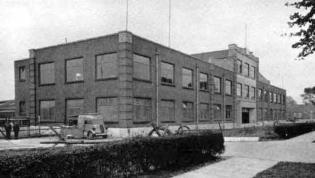
Ekco Priory Works
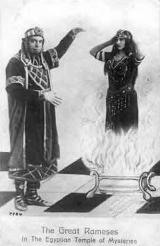
Albert Marchinsky
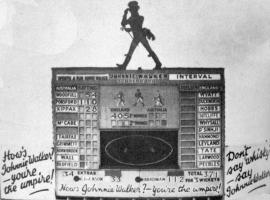
Johnnie Walker Live Scoreboard
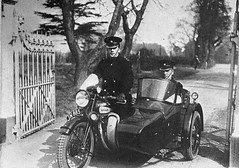
“You’re nicked, sunshine!”
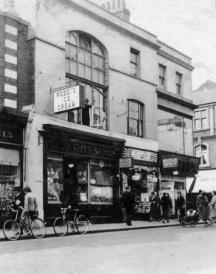
The first Rossi ice cream parlour
Photo Courtesy of Patricia Volante
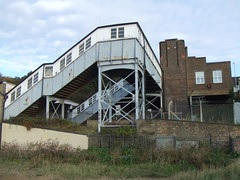
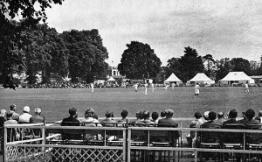
Chalkwell Railway Station
Cricket at Chalkwell Park
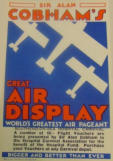
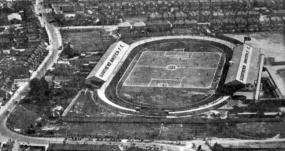
Southend Stadium
Air Display
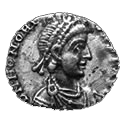
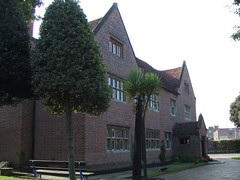
Porters
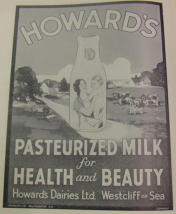
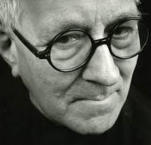
Sir Peter Cook
Howard’s Daries Advert
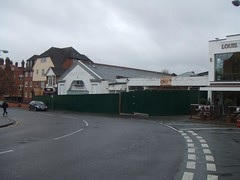
Site of the Empire Palace
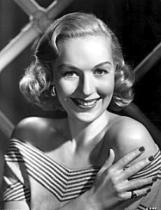
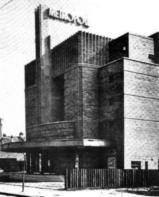
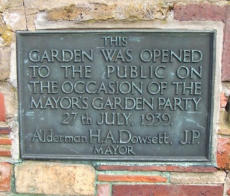
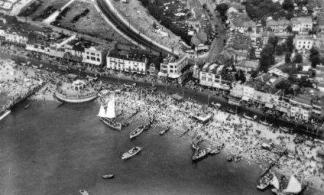
Metropole Cinema
Plaque in Priory Park
Southend Seafront from the Air
Gret Gynt



Website Info:

Southend-on-Sea’s No 1 History Website! Documenting The Town & The Townspeople
Now Incorporating The Sea Of Change Website


SOUTHEND CITY
Chalkwell ▪ Eastwood ▪ Leigh-on-Sea ▪ Prittlewell ▪ Shoeburyness ▪ Southchurch ▪ Thorpe Bay ▪ Westcliff-on-Sea
































































